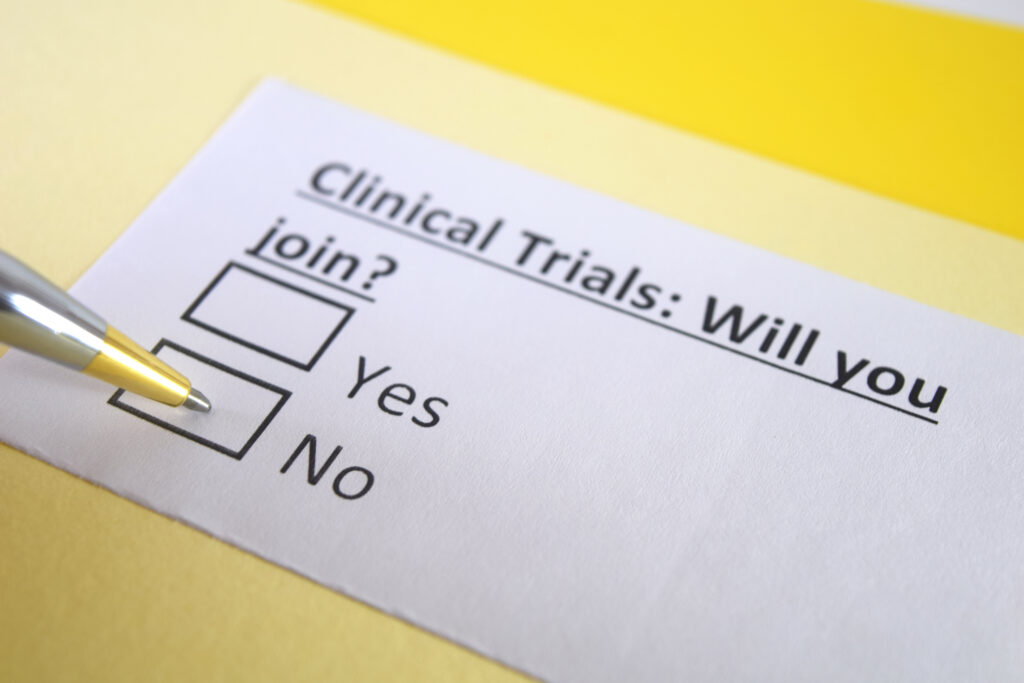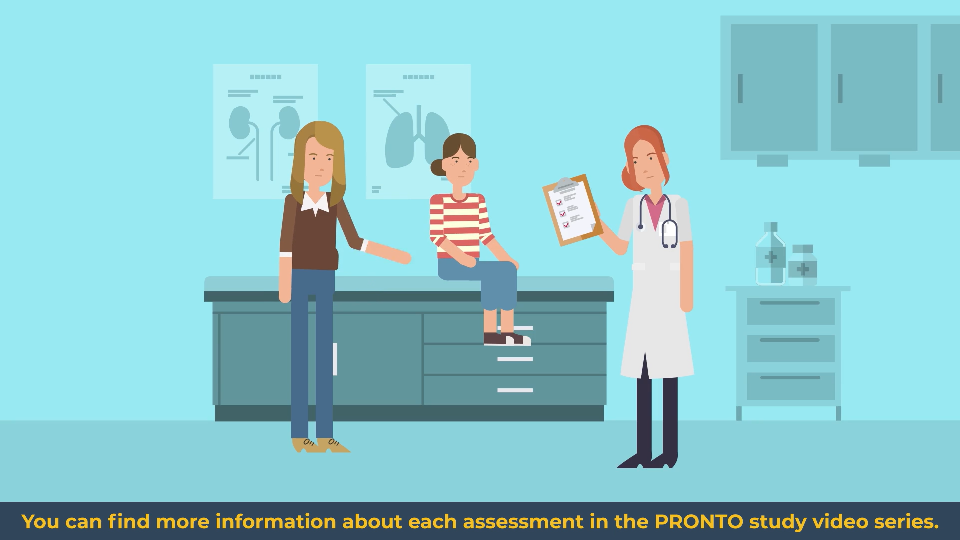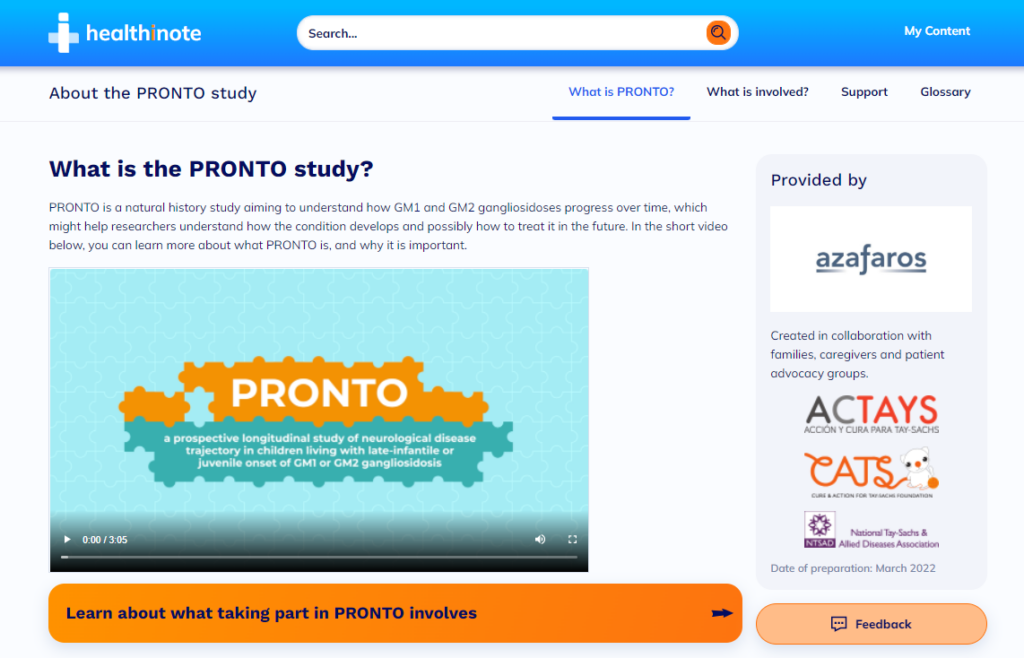Recruiting clinical trial participants and keeping them engaged is a huge challenge for the pharmaceutical industry. Our Business Director, Gary McNamara, shares the major reasons companies struggle to attract patients and explains how more personalised patient education provides a solution.
The pharmaceutical industry faces a massive challenge to attract clinical trial participants and keep them involved throughout the study.
Despite their importance for improving health and saving lives, an estimated 1 in 10 clinical trials fail to recruit any participants, and 20% of enrolled participants typically drop out before the trial ends.
So, why do clinical trials fail to enrol?

Studies show that the overwhelming reason why participants fail to come forward is the lack of clear and precise information about the trial.
For example, they may be confused by the randomisation, content or procedures involved in a Randomised Controlled Trial (RCT).1
Some participants are unaware that they can join a clinical research study or of the potential benefits. A 2010 ResearchAmerica! Survey, for example, found that 94% of respondents hadn’t had this option suggested by their doctor.
Another study in 2008 found that 40% of cancer patients didn’t understand the benefits of joining a clinical trial, either to themselves or for the benefit of future patients, highlighting how a lack of education is a real driving force for companies struggling to recruit.2
Why do participants drop out?

Once patients have joined a study, they often drop out because of a failure to understand the demands and, sometimes, the inconveniences it can pose.
For example, the parents of young children with rare diseases may find they have to take days off work to attend a clinic, or the protocol may need a questionnaire to be completed daily which, without understanding the impact of their completion, can cause motivation to drop.
How can pharma engage participants?
Evidence shows that people are more likely to enrol in a study – and importantly, stick with it – if they understand the aim, what’s involved, and how it can benefit them and their community.
The best way to aid this understanding is through participant education, specifically through the provision of clear and precise information about the clinical trial, that’s presented in a kind, friendly way.
A study in 2009, for example, found that 94% of people would be more likely to participate in a clinical trial if they received information about it beforehand3.

This information should be about what’s expected of them and the impact on themselves and their community, to help them decide whether to participate.
The form of the information is also important. For example, researchers have found that 77% of potential study participants would be more inclined to find out more about a clinical trial if they saw a multimedia resource3.
The most effective means of delivering patient education is through multimedia resources, such as educational videos, as the brain processes visual information 60,000 times faster than text.
How can Cognitant help?
As experts in patient education, Cognitant is helping pharmaceutical companies reach, and retain, clinical trial participants through innovative and inclusive multimedia resources.
Among our recent success stories is co-creating a unique digital resource centre for Azafaros to help them recruit children with a rare neurological disease into a long-term (natural history) study.
The PROspective Neurological Disease TrajectOry study (or PRONTO) hopes to better understand the devastating genetic disorder, Tay-Sachs, by following children who have, or are at risk of, developing GM1 or GM2 gangliosidoses.

Recruiting participants for natural history studies is regarded as especially challenging, as they go on for a long time – in this case, five years – and the participants need to be motivated.
To help them, we worked with patients, advocacy groups, clinicians and caregivers from Europe and the US to design a patient and family-led educational programme, which talks through all the elements of a natural history study.
The digital resources, hosted on Healthinote Cognitant’s award winning patient learning platform, consist of clear and visual material – mostly animations – to make them as accessible as possible. They have proved successful, with over 250 individual users accessing the resource hub in the first three months since launch.

All the resources are available in five languages (English, Italian, German, French and Portuguese Brazilian) to reflect the clinical trial sites.
What will we do next?
Going forward, Cognitant are extending into new disease areas with the same patient centric approach. We will continue to push the boundaries on how information is delivered using our multimedia and multilingual approach to make clinical trial information accessible to caregivers and their families, including children.
More importantly, we will provide the right information, at the right time, and in the most accessible format to democratise health information, making it available to everyone.
By doing so, we hope to improve patient recruitment, and retention, in clinical trials to help improve the future health of individuals and communities, and to save lives.
References
- Behrendt, C. et al. What do our patients understand about their trial participation? Assessing patients’ understanding of their informed consent consultation about randomised clinical trials. Jou of Med Ethics 2010; 37 (2): 74-80
- Zon, R. et al. American Society of Clinical Oncology statement on minimum standards and exemplary attributes of clinical trial sites. J Clin Oncol. 2008: 26 (15); 2562-67
- Shneerson, C. et al. Innovating information-delivery for potential clinical trial participants. What to patients want from multi-media resources? Patient Edu and Couns 2013; 90 (1): 111-17
Cognitant
Looking to empower people with health information for better patient outcomes?
Related News
Kidney Research UK invests in Healthinote patient education platform which could support >15m people with long term health conditions
April, 2025
Oxford, January 2025 – Kidney Research UK, the leading charity dedicated to kidney health, has made a significant investment in Cognitant Group Ltd, a leading...
Webinar Insights – Compliance vs Patient Engagement: Can They Co-Exist?
April, 2025
Is compliance really a barrier to meaningful patient engagement in pharma, or are outdated myths holding us back? In this recent webinar, Dr Tim Ringrose,...
Funding awarded to innovations that support early diagnosis and rehabilitation of Stroke patients
March, 2025
SBRI Healthcare, an Accelerated Access Collaborative (AAC) initiative, in partnership with the Health Innovation Network, has awarded £2.5 million for the development of five innovations...